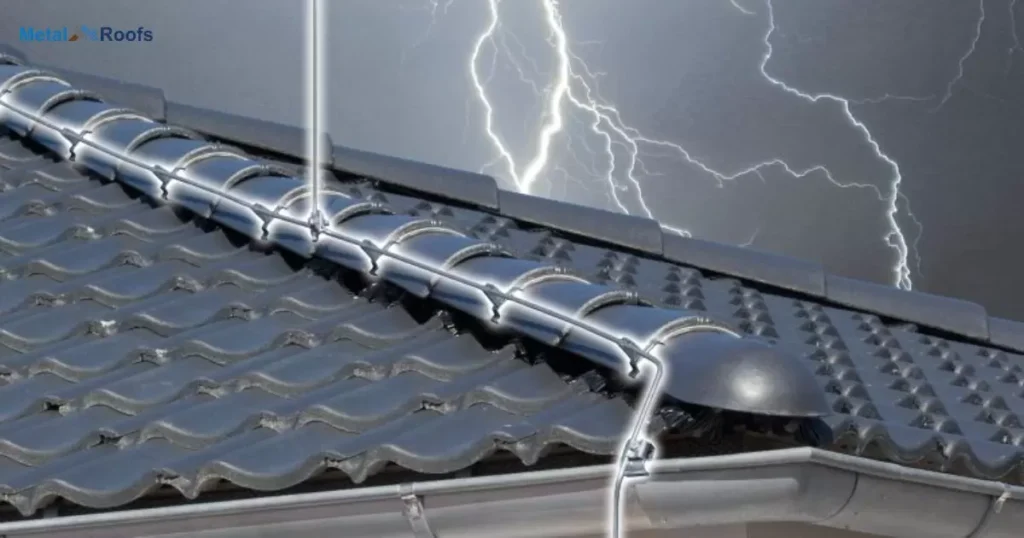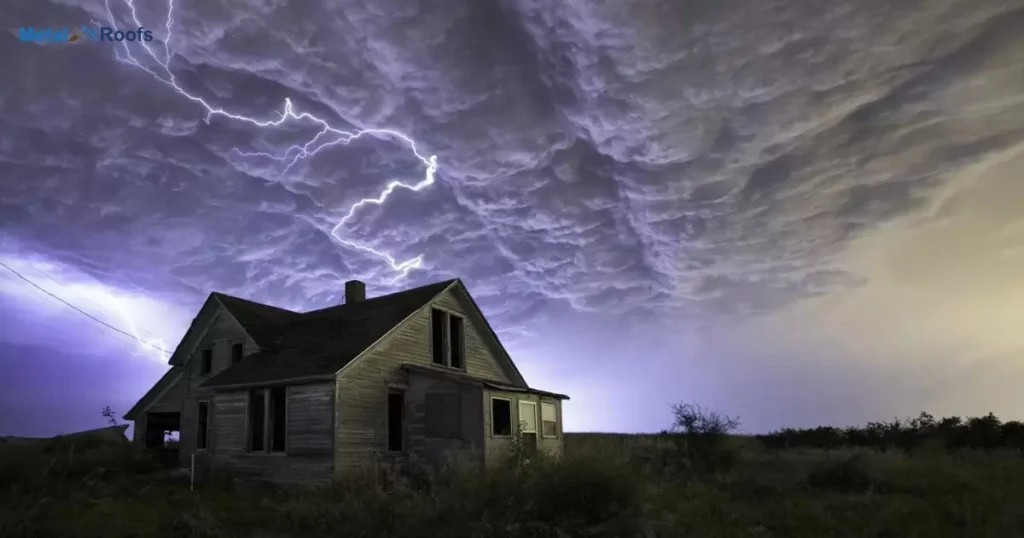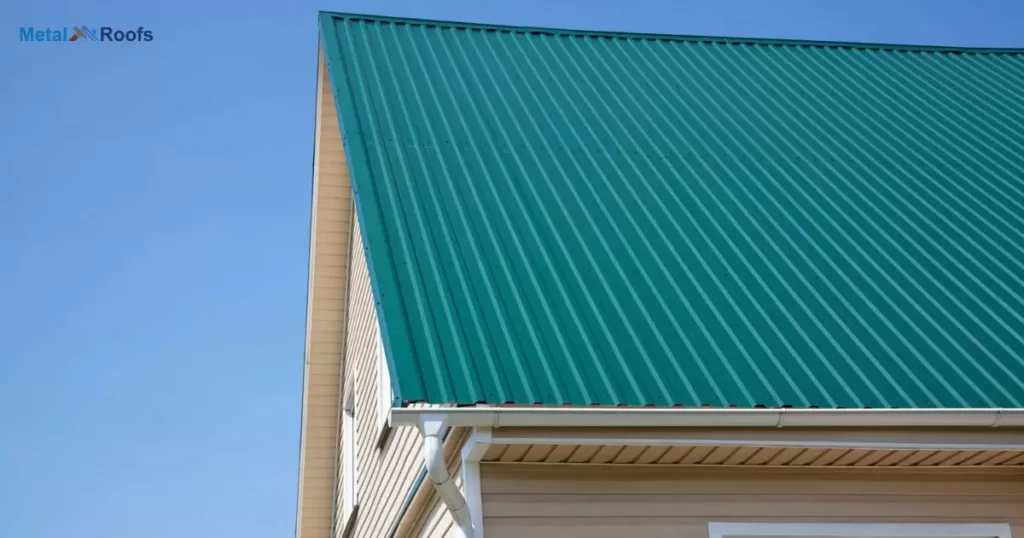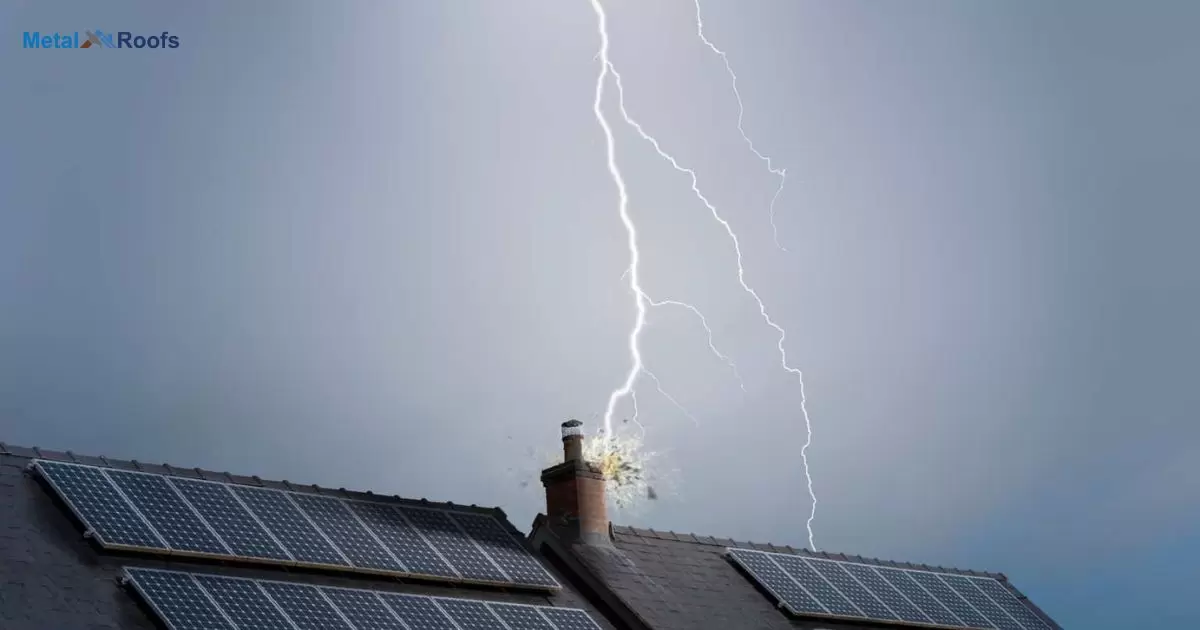Metal roofs conduct electricity. Lightning seeks tall objects. Metal attracts strikes more than other materials. Homes with metal roofs face higher risk. Trees and poles near houses help. Lightning rods offer protection. Proper grounding reduces danger.
Lightning strikes fear in many. Metal roofs spark concern. People worry about safety. They ask if metal attracts bolts. The truth might surprise you. Let’s explore the facts. We’ll answer are metal roofs more likely to be struck by lightning? This topic needs clarity. You’ll learn the real risks.
Metal roofs spark debate. Many think they draw lightning. This idea causes worry. Homeowners feel unsure. They want to know the truth. Does metal really attract bolts? Cutting metal roofing to fit valleys is a crucial skill in installation.
Key Takeaways
- Reflects personal style and individuality.
- Creates a balanced, symmetrical look.
- Allows creative combinations of studs, hoops, etc.
- Increasingly accepted in various cultural settings.
- Requires 6-8 weeks to heal with proper aftercare.
- Ensures proper placement and hygiene.
Metal Roof Lightning
Metal roofs do not attract lightning more than other roofs. The height and location of a building determine the risk. Metal conducts electricity, making it safer during a strike. It spreads the energy throughout the structure.
Metal roofs lower the fire risk from lightning. They are durable and resist extreme weather. Buildings with metal roofs can add lightning rods for extra safety. Concerns about lightning should not stop you from choosing a metal roof.
Do Tin Roofs Attract Lightning?
Tin roofs do not attract lightning more than other roofs. The material of the roof does not affect the likelihood of a lightning strike. Height and location of the building matter more. Taller buildings in open areas face higher risks.
Metal roofs conduct electricity well. This helps them safely disperse lightning’s energy. Metal roofs reduce fire risk compared to wood or asphalt roofs. They are durable and energy-efficient. Concerns about lightning should not stop you from choosing a tin roof.
Metal Roof Lightning Protection

Metal roofs do not attract lightning more than other materials. Lightning strikes tall structures and open areas first. The material of the roof does not matter. Metal roofs can actually be safer during storms. They conduct electricity and disperse it evenly.
Proper grounding helps keep buildings safe. Lightning rods direct energy to the ground. Metal roofs resist fire better than wood or shingles. They do not catch fire from lightning strikes. Metal roofs are durable and efficient. They provide peace of mind in bad weather.
Are Metal Roofs Dangerous In Lightning?
Metal roofs are not more likely to get struck by lightning. The roof material does not attract lightning. Height and location matter more. Tall structures in open areas are at risk. Metal roofs are safe in a storm. They conduct electricity well.
Metal roofs reduce fire risk during lightning. They disperse the energy safely. Proper installation helps protect your home. Lightning rods can add extra safety. Metal roofs are durable and resist weather. They reflect heat and lower cooling costs.
Types Of Lightning Strikes
Lightning strikes can vary in terms of their characteristics and how they interact with the environment. Here are some types of lightning strikes:
Cloud-to-Ground (CG) Lightning: This is the most common type of lightning observed. It originates from the negatively charged bottom part of a cloud and travels to the positively charged ground below. CG lightning can be particularly dangerous to people and property.
Cloud-to-Cloud (CC) Lightning: In this type, lightning occurs between different clouds in the sky. It can be seen as flashes of light traveling horizontally across the sky.
Intra-Cloud (IC) Lightning: Also known as sheet lightning, this occurs entirely within a single cloud. It illuminates the cloud without striking the ground. IC lightning can be quite spectacular, lighting up the sky with bright flashes.
Ground-to-Cloud (GC) Lightning: This type is less common than CG lightning and involves a lightning discharge that originates from the ground and propagates upward to the cloud.
Positive Lightning: Most lightning strikes are negatively charged. Positive lightning, however, originates from the positively charged top of a cloud and tends to be more powerful and longer-lasting than typical CG lightning.
Ball Lightning: A rare phenomenon where a small, glowing sphere of light moves slowly through the air. Ball lightning is not fully understood and can sometimes pass through solid objects or explode violently.
Triggered Lightning: This occurs when human-made objects, such as tall buildings, towers, or wind turbines, induce a lightning strike during a thunderstorm. These structures can act as a trigger for the discharge of lightning.
Understanding the different types of lightning helps in assessing their potential risks and behaviors, which is crucial for lightning safety and protection measures.
Metal Roofs And Lightning Strikes

Metal roofs do not attract lightning more than other roofs. Lightning hits the tallest objects around. It doesn’t matter if the roof is metal or not. The height and location of the building are what count. Metal roofs conduct electricity well. This makes them safe during a lightning strike.
Metal roofs reduce the risk of fire. They disperse the lightning’s energy across the roof. This helps prevent damage. Proper care and lightning rods add extra safety. Metal roofs are also durable and energy-efficient. They reflect heat and can last a long time.
Effective Are Metal Roofs In Preventing Lightning Damage
Metal roofs are effective in preventing lightning damage because they conduct electricity safely during a strike. They help disperse the energy across the roof’s surface and into the ground, reducing the risk of fire compared to non-conductive materials like wood or asphalt.
Lightning is attracted to tall structures and open areas, regardless of roofing material. Metal roofs do not attract lightning more than other types of roofs, but they provide a safer pathway for the electrical charge if a strike occurs.
Factors Affecting Lightning Strikes On Metal Roofs
Several factors influence lightning strikes on metal roofs. Lightning targets taller structures and those in open areas, regardless of their roofing material. Metal roofs are conductive, efficiently dispersing electricity during a strike, which reduces fire risks. Lightning protection systems like rods can further safeguard structures.
Roof Height And Elevation
Roof height and elevation significantly influence lightning strikes on metal roofs. Taller structures and those in elevated or open areas are more likely to attract lightning strikes due to their prominence and exposure.
Roof Shape And Design
Roof shape and design play a crucial role in lightning strikes on metal roofs. Steeper roofs and those with multiple peaks are less likely to be struck, as lightning tends to hit taller and more exposed points.
Surrounding Structures And Terrain
Surrounding structures and terrain greatly influence lightning strikes on metal roofs. Tall trees, neighboring buildings, or geographical features like hills can attract lightning, affecting nearby structures, including those with metal roofs.
Are Metal Roofs More Dangerous?

Metal roofs aren’t more dangerous than other types. Lightning isn’t more likely to strike them than any other roof material. They’re good conductors of electricity, which can safely disperse a strike. This reduces fire risks compared to less conductive materials.
Metal roofs are durable and fire-resistant, offering protection in extreme weather. They reflect heat, which can cut cooling costs in hot climates. Choosing a metal roof doesn’t mean you’re inviting lightning—it’s a safe and practical option for many homeowners
Frequently Asked Questions
What Are The Disadvantages Of A Metal Roof?
Metal roofs can be noisy during heavy rain or hailstorms, and their installation costs are often higher than traditional roofs.
Can Lightning Hit Metal?
Metal can conduct lightning strikes but doesn’t attract them more than other materials it simply handles them effectively if struck.
Can Lightning Strike Through A Roof?
Lightning can strike through any type of roof, including metal, shingles, or tiles, using conductive paths like wiring or plumbing.
Conclusion
The idea that metal roofs attract lightning strikes more than other materials is a common misunderstanding. Lightning strikes based on height and location, not roof material. Metal roofs safely conduct electricity, reducing fire risk during strikes.
Properly installed lightning protection systems can further minimize risks. Whether metal or another material, all roofs can be struck by lightning. It’s crucial to prioritize safety and consider risks and benefits when choosing roofing materials.











